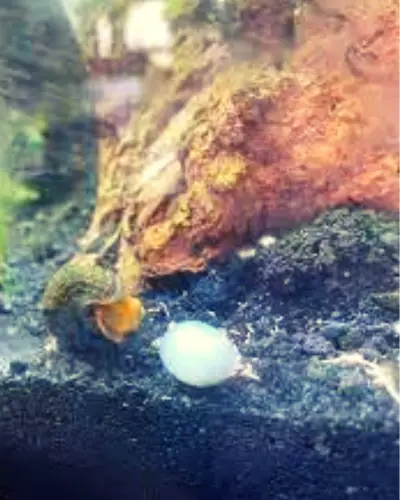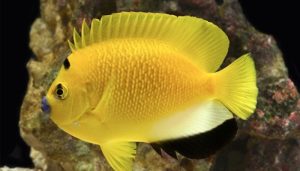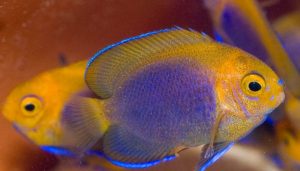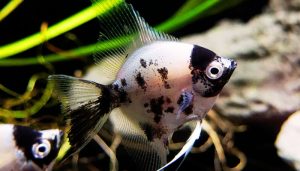Caring for rabbit snail eggs can be a rewarding endeavor for aquarists looking to expand their freshwater aquarium. These fascinating creatures, known scientifically as Tylomelania, are popular additions to community tanks due to their unique appearance and behavior.
Ensuring that the eggs hatch successfully requires understanding their specific care requirements, including water parameters, substrate conditions, and the right tankmates.

Here’s a comprehensive rabbit snail care guide to help you through the process of hatching baby rabbit snails.
Table of Contents
ToggleWhat Do Rabbit Snail Eggs Look Like?
Rabbit snail eggs are easily identifiable by their distinct appearance. They typically form a white egg sack that can be found attached to various surfaces in the aquarium, such as driftwood or plants. The eggs are soft and gelatinous, resembling small clusters, and can contain multiple eggs within one sack.
Under the right conditions, these eggs will develop into fully formed baby rabbit snails. The rabbit snail egg sac can sometimes be mistaken for the eggs of mystery snails due to their similar appearance, but a close inspection reveals their unique texture.
Proper care of these eggs is crucial as they require stable water temperature and suitable water parameters to thrive.
Once the female rabbit snail lays her eggs, it is important to monitor them closely. The egg sack can contain anywhere from ten to thirty eggs, depending on the health and age of the female.
If conditions are right, the eggs will hatch within a few weeks, and the baby rabbit snails will emerge ready to explore their new environment.
Ensuring that the tank has the right substrate, such as fine sand or gravel, can help the baby snails burrow and feel secure. Aquarists should also be mindful of the tankmates present, as certain species may pose a threat to the delicate new hatchlings.
Rabbit Snail Care Requirements
To ensure the successful hatching of rabbit snail eggs, it’s important to maintain ideal rabbit snail care conditions in the aquarium.
The tank size should be large enough, with at least a 10-gallon capacity, to provide ample space for the snails and their tankmates. Rabbit snails thrive in slightly alkaline freshwater, with a pH level between 7.0 and 8.0.
Additionally, maintaining stable water temperature around 75 to 82 degrees Fahrenheit is crucial for their well-being. Regular water changes and monitoring of water parameters will contribute to a healthy environment for both adult snails and baby snails alike.
Calcium is another vital aspect of rabbit snail care. Snails need calcium supplements to build strong shells, and this can be provided through various means, such as crushed coral in the substrate or adding calcium-rich foods like zucchini and spinach to their diet.
Live aquarium plants can also help maintain water quality and provide a natural habitat for the snails. By ensuring these conditions are met, aquarists can create a perfect environment for rabbit snails to thrive and reproduce successfully, leading to a healthy population of snails in their freshwater aquarium.
Reproduction/Rabbit Snail Breeding
Rabbit snail breeding is an interesting process that requires careful observation and understanding of their reproductive habits. These snails typically reproduce in pairs, with the female rabbit snail laying eggs after mating with a male.
Once the eggs are laid, they will attach to surfaces within the aquarium, where they will need to be cared for until they hatch.
It’s essential to provide adequate tankmates that are compatible with rabbit snails, as certain loaches and aggressive fish may pose threats during this vulnerable stage.
Creating a peaceful community tank will help ensure the safety of both adult and baby rabbit snails.
Successful breeding of rabbit snails can contribute to a thriving aquarium ecosystem. The addition of baby rabbit snails not only enhances the biodiversity of the tank but also helps in controlling algae growth, as they are known to graze on it.
Maintaining proper water parameters and quality is crucial during the breeding process, as poor conditions can lead to reduced fertility or health issues for the snails.
With attentive care, aquarists can witness the fascinating cycle of life as they watch their rabbit snails reproduce and their population grow within the community tank.
FAQs
What are rabbit snail eggs and where do they come from?
Rabbit snail eggs are the reproductive output of rabbit snails, which are freshwater snails native to the lakes of Sulawesi, Indonesia. These eggs are typically laid in clusters and require specific conditions to hatch successfully.
What tank requirements do I need to consider for rabbit snail eggs?
Rabbit snail eggs need a stable environment with a well-maintained tank. The water should be kept clean, with a temperature range of 24-28°C (75-82°F), and a pH level between 7.0 and 8.0. It’s also essential to have adequate filtration and to perform regular water changes.
How long does it take for rabbit snail eggs to hatch?
Rabbit snail eggs usually take about 2-4 weeks to hatch, depending on the water temperature and conditions in your aquarium. Keeping the water conditions stable can help ensure successful hatching.
What should I feed baby rabbit snails once they hatch?
Once the baby rabbit snails hatch, you can feed them finely crushed pellets or algae wafers. It’s important to provide small amounts of food suitable for their size to ensure they grow healthy and strong.
Are rabbit snails compatible with other tankmates?
Yes, yellow rabbit snails can be kept with various tankmates, such as livebearers and other peaceful freshwater aquarium snails like nerite snails and trumpet snails. However, avoid aggressive species that may harm them.
How can I ensure my rabbit snails are happy and healthy?
To keep your rabbit snails happy and healthy, maintain stable water conditions, provide a planted tank with hiding spots, and feed them a balanced diet including algae wafers and pellet food every 4-6 weeks.
Can I leave a comment if I have more questions about rabbit snail care?
Yes, please feel free to leave a comment if you have any additional questions or need further clarification about caring for rabbit snails in your aquarium or breeding!
What are some signs that my rabbit snail eggs are viable?
Viable rabbit snail eggs will appear firm and will often have a translucent look. If you see the eggs turning white or developing mold, they may not be viable. Healthy eggs should remain intact until they hatch.
What is the difference between rabbit snails and other types of snails like nerite snails?
Rabbit snails, such as the golden rabbit snails and elephant snails, are larger and have unique shell shapes compared to nerite snails. They are also slower-moving and prefer slightly different water conditions. Each type of snail can be a unique addition to your aquarium.
Conclusion
Caring for rabbit snail eggs requires dedication and understanding of their specific needs. By providing the right conditions, including proper water parameters, suitable tankmates, and adequate calcium sources, aquarists can successfully hatch baby rabbit snails and enjoy their presence in the aquarium. The journey from egg to fully formed snail is not only fascinating but also rewarding for those who take the time to learn about rabbit snail care. As these unique freshwater snails thrive in a well-maintained environment, they will contribute to the overall health and beauty of your aquarium.
In conclusion, if you’re considering adding rabbit snails to your aquarium, it’s essential to familiarize yourself with their breeding habits and care requirements. By following the tips outlined in this guide, you can ensure that your rabbit snails remain happy and healthy, ultimately leading to successful hatching of the Rabbit Snail Eggs. Remember, a well-maintained aquarium is key to fostering a thriving community tank where all inhabitants can prosper together, including the charming baby rabbit snails emerging from their egg sacks.
You might also like
- Do Rabbit Snails Eat Plants in Aquarium: (Experts Advice)
- Do Rabbit Snails Eat Algae: You WON’T Believe What They Do!
- Do Rabbit Snails Reproduce Asexually: (The Shocking Truth)
- Rabbit Snail Breeding 101: A Comprehensive Beginner’s Guide
- Golden Rabbit Snail 101: Tank Requirements & Care Tips
- How Do Rabbit Snails Mate: (Mind-Blowing Facts)
- Rabbit Snail Baby Care: 5 Ways to Avoid Disaster! (Expert Tips)
- White Spotted Rabbit Snails 101: (A Comprehensive Care Guide)




